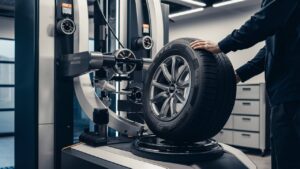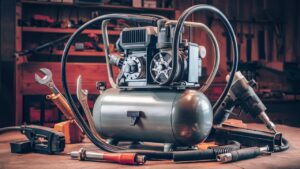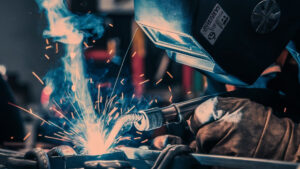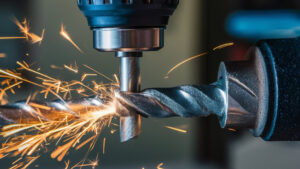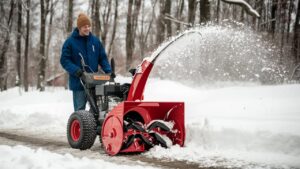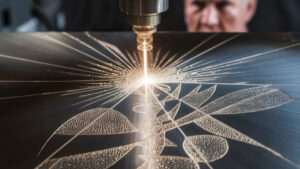Is your snowblower acting up just when you need it most? A dirty carburetor could be the culprit, making your machine hard to start or causing it to stall.
Recommended Best Snow Blower in 2025-2026
| Recommendation | Product |
| Best Overall | Honda HSS1332ATD |
| Popular Choice | Ariens Deluxe 28 SHO Snow Blower |
| Best Value | Toro 721 QZE Gas Snow Blower |
| Best Budget | Cub Cadet 2X IntelliPower Gas Snow Blower |
| Another Excellent Pick | EGO POWER+ 24″ Electric Snow Blower |
The good news is, you don’t have to dismantle your entire snowblower to fix this. Imagine saving time and avoiding frustration by cleaning your carburetor without removing it. In this guide, you’ll discover simple, effective steps to get your snowblower running smoothly again—fast and hassle-free.
Keep reading to learn how easy it can be to restore your snowblower’s power right from where it sits.
Signs Of A Dirty Carburetor
A dirty carburetor can cause many problems for your snowblower. It affects how the engine works and wastes fuel. Knowing the signs helps you fix it early. You can clean the carburetor without removing it if you catch the issues soon.
Engine Performance Issues
The engine may run rough or stall often. It might lose power or hesitate when you push the throttle. These happen because dirt blocks fuel flow. The carburetor cannot mix fuel and air properly.
Fuel Efficiency Drop
Your snowblower might use more fuel than usual. A dirty carburetor sends too much fuel to the engine. This wastes gas and makes the machine cost more to run. You will notice shorter run times between refills.
Starting Difficulties
Hard starting is a common sign of a dirty carburetor. The engine may crank but not start quickly. It might take many tries to get it going. Dirt clogs fuel passages, stopping fuel from reaching the engine fast.
Tools And Materials Needed
Cleaning a snowblower carburetor without removing it requires a few simple tools. These items help you reach and clean the carburetor properly. Having the right tools makes the process easier and safer. Prepare all materials before starting the cleaning job. This saves time and avoids interruptions.
Cleaning Spray
A good cleaning spray is essential. Use a carburetor cleaner spray made for small engines. It dissolves dirt, gum, and fuel deposits inside the carburetor. Spray it directly into the carburetor openings. Avoid using harsh chemicals that can damage the parts. Choose a spray that evaporates quickly and leaves no residue.
Screwdrivers
Screwdrivers help open the carburetor cover or adjust screws. A set with flathead and Phillips heads works best. Use the right size to avoid stripping screws. Precision screwdrivers can reach small screws in tight spaces. Keep the screwdrivers clean and rust-free for smooth use.
Protective Gear
Wear protective gear during cleaning. Gloves protect your hands from chemicals and dirt. Safety glasses shield your eyes from spray and debris. Work in a well-ventilated area to avoid inhaling fumes. Dress in clothes you do not mind getting dirty. Safety first always.
Preparing The Snowblower
Preparing your snowblower is the first step to cleaning the carburetor without removal. This helps ensure safety and makes the cleaning process easier. Taking time to get your machine ready can save effort later.
Start by working in a well-ventilated area. This reduces the risk of inhaling harmful fumes. Also, gather all cleaning tools before starting. Being prepared helps you work smoothly and quickly.
Safety Precautions
Turn off the snowblower and remove the spark plug wire. This stops the engine from starting accidentally. Wear gloves to protect your hands from fuel and dirt. Avoid smoking or open flames near the machine. Gasoline vapors can catch fire easily. Keep a fire extinguisher nearby just in case.
Locating The Carburetor
Find the carburetor on the side of the engine. It usually looks like a small box with fuel lines attached. Check your snowblower manual for exact location. Knowing where it is helps you reach it without removing parts. Make sure the area around the carburetor is clean before you start.
Step-by-step Cleaning Process
Cleaning the carburetor without removing it saves time and effort. This step-by-step process helps keep your snowblower running smoothly. Follow these simple steps to clean the carburetor effectively.
Spraying The Carburetor Cleaner
Start by locating the carburetor on your snowblower. Use a carburetor cleaner spray designed for small engines. Spray the cleaner into the carburetor’s air intake and around the throttle body. This removes dirt and buildup that block fuel flow. Let the cleaner sit for a few minutes to dissolve grime.
Cleaning The Throttle And Choke
Next, focus on the throttle and choke parts. Spray cleaner directly onto these components. Move the throttle and choke levers back and forth to loosen dirt. Wipe off excess cleaner and grime with a clean cloth. This keeps these parts moving smoothly and helps the engine start easier.
Clearing Fuel Passages
Fuel passages can get clogged and stop fuel from flowing. Use the carburetor cleaner spray to flush out these passages. Spray into the fuel inlet and other small openings. Repeat spraying until no dirt or debris comes out. This step improves fuel flow and engine performance.
Post-cleaning Checks
After cleaning your snowblower carburetor without removing it, checking its performance is key. Post-cleaning checks help confirm the job is done right. These steps ensure your snowblower runs smoothly and lasts longer.
Testing Engine Start
Start the engine to check if it runs well. Listen for smooth sounds without sputters or stalls. If it struggles, the carburetor may need more cleaning or adjustment. A steady start means the carburetor is clear and fuel flows properly.
Adjusting Idle And Mixture
Set the idle speed to keep the engine running without stalling. Turn the idle screw slowly until the engine runs steady. Adjust the mixture screw to balance air and fuel. Proper adjustment improves engine power and fuel efficiency.
Inspecting For Leaks
Look closely around the carburetor for fuel leaks. Check fuel lines and connections for cracks or loose fittings. Leaks waste fuel and can cause engine problems. Tighten or replace any parts showing signs of leaks.
Tips For Preventing Carburetor Clogs
Keeping your snowblower carburetor free from clogs saves time and hassle. Clogs reduce engine power and make starting hard. Preventing these blockages ensures smooth operation through the winter. Follow simple tips to avoid carburetor problems and keep your snowblower ready.
Using Fresh Fuel
Old fuel causes deposits and gum buildup inside the carburetor. Always use fresh gasoline with the right ethanol content. Avoid storing fuel longer than 30 days. Add a fuel stabilizer if the snowblower sits unused for weeks. Fresh fuel burns cleaner and prevents sticky residue.
Regular Maintenance Schedule
Clean the air filter and check spark plugs regularly. Inspect the carburetor for dirt or debris on a monthly basis. Run the engine often during winter to keep fuel flowing. Follow the manufacturer’s maintenance guide for best results. Regular care reduces the chance of blockages and improves performance.
Proper Storage Techniques
Drain the fuel tank before storing the snowblower for long periods. Run the engine until it stops to clear the carburetor of fuel. Store the machine in a dry, covered place to prevent moisture buildup. Use a fuel stabilizer if you cannot drain the tank. Proper storage protects the carburetor from damage and clogs.
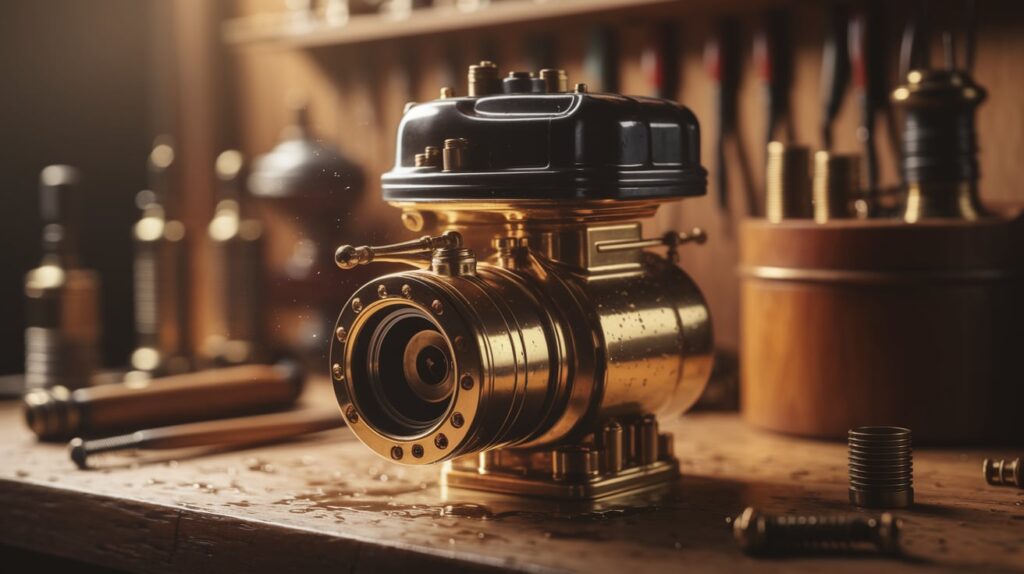
Frequently Asked Questions
How Do I Clean A Snowblower Carburetor Without Removal?
Use a carburetor cleaner spray directly into the air intake. Run the engine to let the cleaner dissolve deposits. Repeat if necessary for better performance. This method avoids full disassembly and saves time.
What Tools Are Needed To Clean Carburetor Without Removal?
You need carburetor cleaner spray, a screwdriver, and safety gloves. A clean cloth helps wipe exterior parts. These simple tools allow effective cleaning without removing the carburetor.
How Often Should I Clean My Snowblower Carburetor?
Clean the carburetor at least once every season. Frequent use or poor fuel quality may require more regular cleaning. Timely maintenance prevents clogging and ensures smooth engine operation.
Can I Use Fuel Additives To Clean The Carburetor?
Yes, fuel additives help dissolve varnish and deposits inside the carburetor. Add them to your fuel tank as directed. They maintain carburetor cleanliness without the need for physical cleaning.
Conclusion
Cleaning your snowblower carburetor without removing it saves time and effort. Use simple tools and follow safe steps carefully. Regular cleaning keeps your machine running smoothly all winter. Avoid clogs and improve fuel flow with easy maintenance. Stay safe by working in a well-ventilated area.
A clean carburetor means better performance and longer machine life. Small tasks like this prevent big problems later. Keep your snowblower ready for the next snowfall. Simple care goes a long way.
